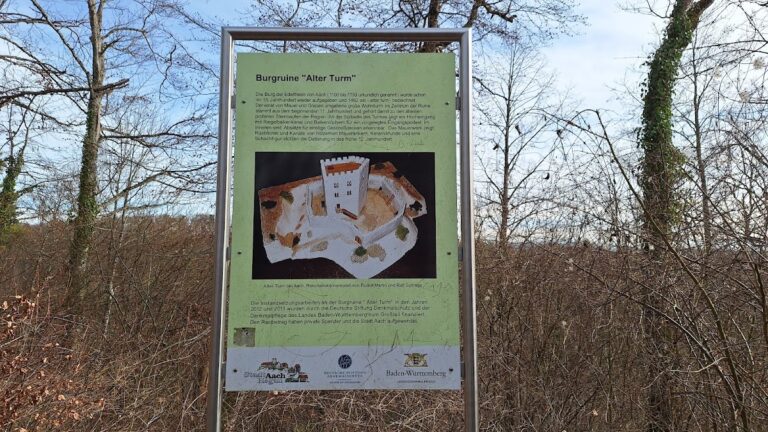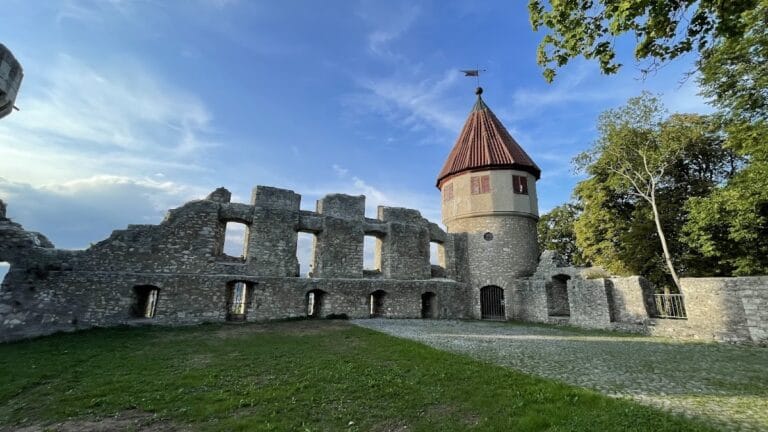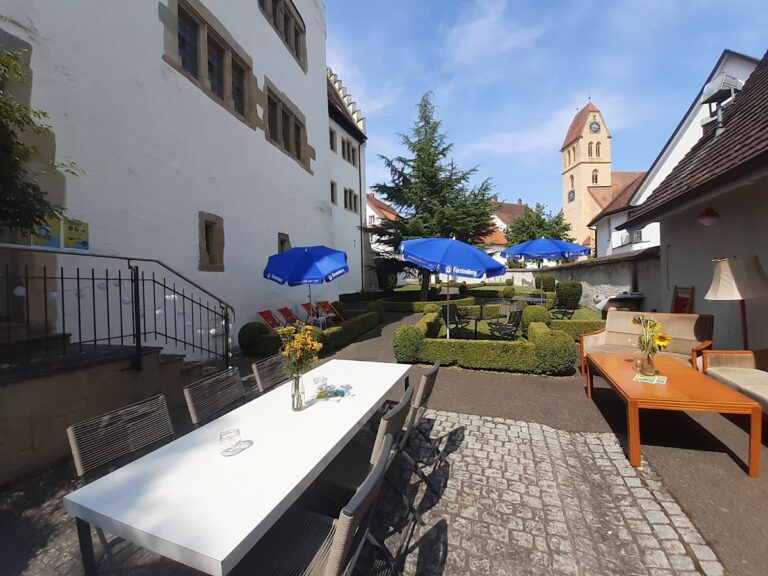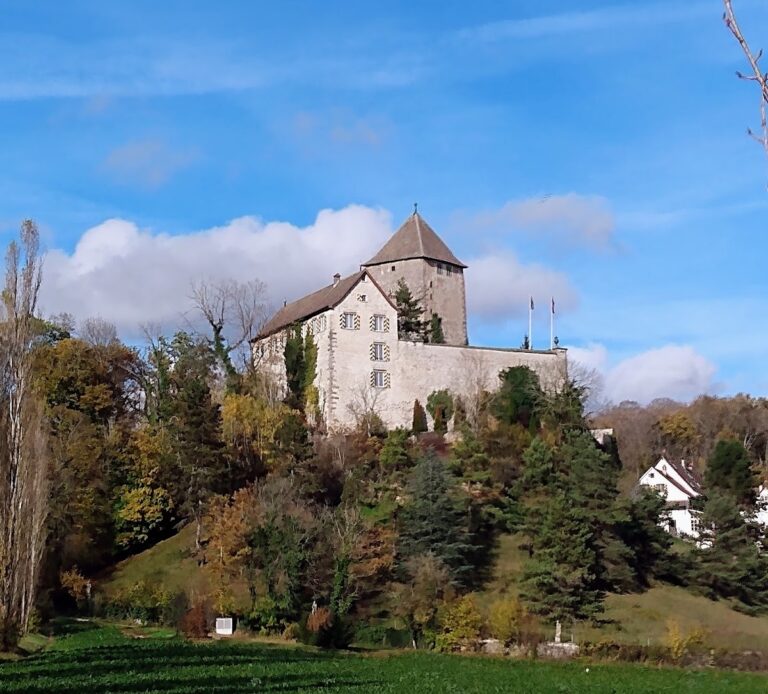Langenstein Castle: A Historic Noble Residence in Germany
Visitor Information
Google Rating: 4.7
Popularity: Low
Google Maps: View on Google Maps
Official Website: www.schloss-langenstein.com
Country: Germany
Civilization: Medieval European
Remains: Military
History
Langenstein Castle is located in the municipality of Orsingen-Nenzingen, Germany. Its origins trace back to the early Middle Ages when it was established by the Abbey of Reichenau, a monastic community that owned extensive lands in the Hegau region. Around the year 1100, the Abbey constructed the castle’s central tower, known as a bergfried, on a prominent limestone outcrop between the towns of Singen and Stockach.
During the 12th and 13th centuries, the castle served as the seat of a group of ministeriales, unfree knights who were vassals of the Reichenau Abbey. These knights adopted the surname “von Langenstein” based on the castle’s name. The family holding the castle came to an end in the early 14th century, after which the property passed through the hands of various noble families, including the Bilgeri von Heudorf knights, reflecting the shifting regional power dynamics of the late medieval period.
From 1570 to 1605, the castle underwent significant redevelopment in line with Renaissance architectural trends. This transformation expanded the structure around the original square tower, converting it from a fortified stronghold into a more comfortable noble residence. Later on, an additional wing known as the “New Castle” was constructed and joined to the earlier residential building by a connecting section, further enlarging the estate.
In 1826, Langenstein Castle entered the possession of Grand Duke Ludwig I of Baden. He incorporated the property into the private estates of the Counts von Langenstein, a morganatic branch stemming from his relationship with the actress Katharina Werner. Upon the death of Ludwig Wilhelm August von Langenstein, Ludwig I’s illegitimate son, in 1872 without heirs, ownership passed to his sister Luise. Luise married Count Carl Douglas in 1848, introducing the castle into the Douglas family lineage, who have maintained ownership since that time.
The Douglas family established Langenstein Castle as their residence beginning in 1906. Following the 1918 November Revolution and the abdication of Grand Duke Friedrich II of Baden, the former ruling family resided at the castle until 1920, supported by kinship ties to the Douglas owners. In the later 20th century, the castle also became known for hosting the Fasnacht Museum from 1969 to 2018, which housed an extensive collection of over 300 carnival figures and wooden masks reflecting the Swabian-Alemannic Fasnacht, a traditional regional festival. Plans are underway to relocate this museum to a new building near the castle scheduled to open in 2025. The estate grounds have been developed to include recreational facilities such as a golf and country club since the late 1980s, continuing the site’s evolution as a private noble residence.
Remains
Langenstein Castle is perched atop an elongated Jurassic limestone formation that defines its strategic location within the Hegau region. The earliest element surviving today is the bergfried, the main defensive tower originally built around 1100. The stone construction’s lower floor remains intact, providing a direct architectural link to its initial medieval origins under the Abbey of Reichenau’s direction.
Between 1570 and 1605, the castle’s core was redesigned as a Renaissance noble residence centered around a square tower. This main residential building retains the characteristic layout from this period, with its robust masonry constructed atop the limestone base. The older tower merged seamlessly with the expanded living quarters during this reconstruction.
Subsequently, the complex grew to include what is known as the “New Castle,” a later addition connected by an intermediate wing to the original living quarters. This extension houses the primary apartments today and forms part of the castle’s continuous habitation space. Additional structures form the estate, including a chapel serving religious functions and auxiliary buildings such as the Ludwigshof, a separate farm complex, and the Reichenau tithe cellar, historically used to store collected rents or offerings in kind.
The castle estate developed further in the late 20th century when the Douglas family introduced recreational grounds encompassing a golf course, tennis courts, and equestrian facilities. These additions spread across the surrounding landscape without altering the historical core of the castle complex.
Between 1969 and 2018, sections within the castle accommodated the Fasnacht Museum, which displayed an extensive collection of Swabian-Alemannic carnival masks and figures. Although the museum has since been moved, the collection’s presence highlighted the castle’s role not only as a noble residence but also as a cultural custodian of regional traditions.
Overall, Langenstein Castle survives as a well-preserved historic estate combining medieval defensive elements with Renaissance residential architecture, augmented by later expansions. Its continuity as a residence and cultural site contributes to the layered historical fabric visible today.










